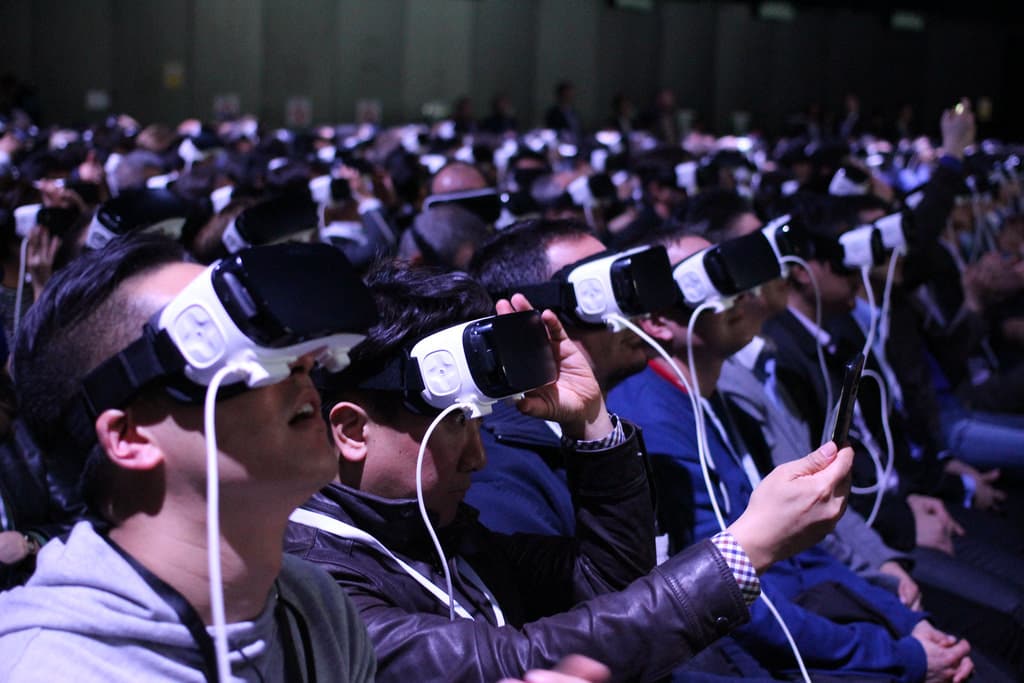The phenomenon of eSports has been around for years, but only recently have they been embraced by the mainstream – through the use of eSports bars and the wide reach that live streaming has on society. Indeed, between 2015 and 2017, the eSports industry’s revenue grew 51.7%, with the total revenue expected to surpass $1billion by 2019. The momentum felt by the industry is steady, and many are turning round to the idea of both playing eSports and watching eSports. Valve, the developers of eSports giant Dota 2 – an extremely successful multiplayer battle arena game – announced in 2016 that they planned to change the way we watch eSports to stream in VR, and this viewing eSports in VR could have led to the eSports boom. But what about playing in VR too?
Will a VR Tournament Work?
The VR Challenger League represents the first eSports league played solely in virtual reality. Established by Intel, ESL, and Oculus, the league will enable challengers to play Insomniac’s The Unspoken and Ready at Dawn’s Echo Arena. The latter game has the added benefit and pull of being fully mobile, forcing VR-mask-donning players to stand up and move with their equipment as their onscreen avatar would. By adding the kinetic element, the tournament is gaining greater traction than a standard seated one would. It’s expected to be more visually interesting, as well.
Valve’s announcement to allow spectators to watch Dota 2 tournaments in VR, making them feel as though they were there, was a huge step forward for the linking between gaming and VR. A unique gathering dubbed the Meta Quest games showcase was organized to share information about the company’s virtual worlds and video games. The accessibility of spectating Dota 2 in VR brought an added element to the industry, providing just as much entertainment and engrossing action for those watching as those playing. With smaller moves made elsewhere in VR (e.g. Call of Duty Infinite Warfare: Jackal Assault) the general population still remains slow on the VR uptake. 2016 saw the first televised eSports tournament, as fans flocked to play, watch, as well as watch remotely at the Overwatch Open on TBS. This move alone was a huge step, with the mainstream media taking up something that had previously been the realm of techies and hardcore gamers. The growth for VR has been facilitated by all sides, but there are still some hesitations for major uptake.
What Are the Current Options for Live Streaming?
But that’s not to say that gamers are strangers to developing technologies, especially when it comes to live streaming. Even the BBC is developing a way of live streaming that hopes to alter traditional television broadcasting and allow game shows to be broadcast directly into a viewer’s living room, allowing them to play and interact as though they were there. The success of Twitch shows that streaming games brings in the viewers – 45million per month to be specific. In more niche markets, Bet Way has implemented “live dealer” games, allowing players to play interactive casino games such as roulette and baccarat on HD video streams by seeing real dealers dealing direct to them. The move to playing and watching in VR seems the next logical step in an industry dedicated to pushing boundaries of what technology can do.
What Does the VR Market Look Like?
The projected economic impact of the adoption of AR/VR technologies at a medium adoption level is $15.6 billion by 2020, while the hardware and software market size worldwide looks to eclipse over $40.4 billion by 2020. These statistics show that the VR market is definitely a growing one, especially given the endgame of universal adoption has barely begun, giving greater scope for growth. Add this to the flourishing eSports industry, and the recipe is one for greater prosperity. According to Omnivirt, there will be more than 171 million active Virtual Reality users by 2018, with Google’s Consumer Survey finding that 41% of adults were interested in trying the technology.
However, at the moment, the barriers to entry for a VR tournament are fairly high: You need both software and hardware suitable to play, and the right multiplayer VR game that lends itself well enough to competitive play. While moves are made to push forwards on making the average consumer view VR in a more appealing light, there is still a way to go. Each new development in VR headsets brings down the weight and the price and ups the general usability. Although it’s the healthy competition in the industry that is meaning consumers won’t have to wait long before the VR equipment is considered affordable – HTC has brought out a bundle that allows consumers to dive straight in with playing, with every piece of kit necessary.
The step forwards shows that the eSports industry is embracing change and growing technologies, which will see it likely achieving the robust revenue figures it predicted for 2019 – whether that evolution is led by VR or other live streaming capabilities.



